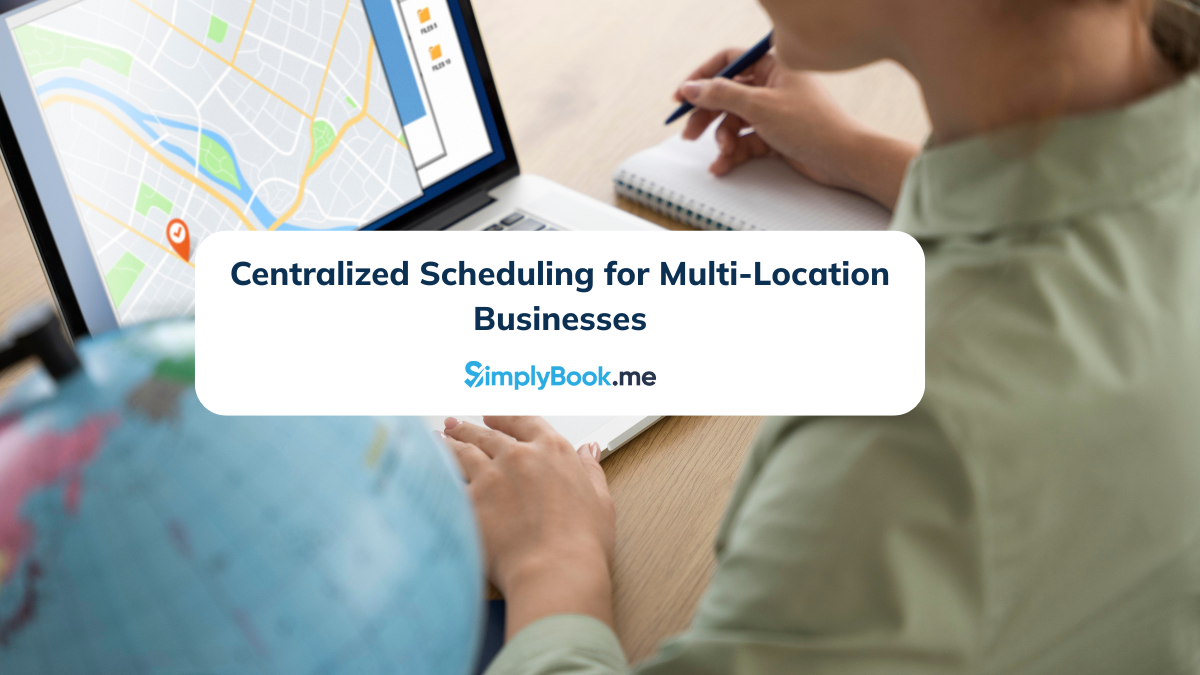Long-lasting Client Relationships – How to create profitable connections with your clients

This post is also available in:
![]()
![]()
![]()
![]()
Many components contribute to the success of a business, but none more so than clients. There is no business without clients! Consequently, client relationships become the most important relationship you can cultivate.
Why are client relationships so important?
If you genuinely need to know why client relationships are essential, we need to talk about the client lifecycle value – how much revenue a long-lasting client relationship can bring to your business.
Poor client relationships shorten the lifecycle of the client.
- They do not return for additional projects and services,
- They certainly don’t recommend you to others
- They are more likely to leave poor reviews and drive new clients away
Great client relationships extend the lifecycle and value of the client
- They do return for further projects and services
- They respect your quality and value for money
- They actively recommend you to others
- Leave positive reviews that indirectly encourage new clients3
With a great client relationship, their value persists even when they no longer need your services because they will still recommend you to others. In some cases, great clients can become the catalyst for business expansion or diversification because they want something that is just beyond your scope. They might have come to you first to ask if you could help. Some might even wait for you to implement it so that they can work with you again. These clients are more precious than diamonds.
So this is why your relationships with clients are so important. It’s not just about keeping the client sweet with platitudes and promises but building a connection with the people and businesses you serve.
X Strategies for Cultivating Long-lasting and Profitable Client Relationships
The way you communicate with clients is crucial. It doesn’t matter if they are existing, potential, or even past clients.
1. Communicate

Be available – but not all the time.
Define your communication channels early in the relationship. Keep them accessible and varied to accommodate individual preferences.
Most often, this will consist of the following:
- a phone number (mobile and or office),
- email,
- instant messengers, such as Slack or Telegram
This is a broad range of access to you and your business. You can even add social media if you have someone who looks after those accounts.
NB Social media is not a sound contact channel if you don’t have a constant eye on the messaging.
Try to avoid offering your support “at any time”. If you don’t value your time, then neither will the clients.
Set reasonable boundaries
Defining your contact channels can make life much easier if you set communication expectations. Make it clear that they can message you anytime but that you will only respond within your working hours.
Determine how they should contact you. For Example:
- Email for complex requests and problems
- Instant messaging for quick fixes and quick queries
- Phone for discussions and clarification.
- When none of those is appropriate, book an appointment.
Meet regularly
Meeting regularly is not appropriate for short, service-based businesses, such as beauty salons or art lessons. However, many service companies, such as design agencies or marketing companies, work on a project basis.
Projects require constant updates to ensure they stay on scale and target. By meeting regularly along the project lifecycle, you confirm you keep your client’s vision at the top of your mind, and they guarantee they are getting what they want from you.
Maintain two-way accountability
Communication should always work both ways, which means keeping you and your clients accountable for the service provision.
This works in any service business, from personal training and facials to kitchen design and advertising campaigns. It’s just a matter of scale.
When you go to a physical trainer with a list of goals, your trainer will respond with a plan to help you achieve those goals. However, if your goals shift or circumstances change, you must let the trainer know so they can adjust their programs to help you achieve the new purpose or work within different parameters. Otherwise, the trainer won’t help you achieve your goals, and the client will feel disappointed in that failure.
Likewise, if the trainer shifts the program without giving reasons, the client will again be disappointed, even though the new outline might be a better approach.
In both situations, there is poor accountability from one side or the other.
And it all comes down to good communication and making both sides of the partnership accountable for their actions and requests.
Communicate concerns early
It’s no good waiting until you are halfway through a project before voicing concerns about the scope, direction, or even the final product.
If a person goes to the salon for a perm and dye, curls won’t suit their facial features, or the colour would make them appear sallow. The stylist’s job is to ensure they know these things before starting work. Potentially making a suggestion that veers slightly away from the original plan while also incorporating aspects of the original request.
This is where a great client relationship is the best recipe for repeat business and continued advocating.
Takeaway: With excellent communication and two-way accountability, a great client relationship will ensure that everyone gets what they need, despite not getting what they originally asked for. The results are critical, but sometimes there is a detour to get the best ones.
2. Treat Clients as Individuals

A while ago, there was talk of ignoring the B2B and B2C marketing designations, instead calling it H2H (human to human). Sometimes when we’re trying to engage with larger clients, such as big companies, we forget that the person we are approaching is still a person. Even though they have greater concerns and a much more demanding checklist of requirements, you are still dealing with a person with a life, feelings, families, hobbies and commitments.
This is true for smaller clients too. While you might have a demographic profile for your clientele, you must ensure you treat them all as individuals and acknowledge what makes them different. Treating them all the same with the same approach will result in a poor client relationship.
Embrace small talk
Some people find small talk awkward and challenging, but it’s incredible how much you can learn about the people with whom you are doing business.
It might not sound like much, but when you show an interest in people and actively listen, you discover critical insights about what makes them tick, their values and what repels them. When you develop these insights, you can connect with a client on a deeper level, making them more responsive to you and your business.
Treat clients as partners in your service.
While you are the expert, they have engaged for a service they can’t or don’t want to perform themselves; they are the expert on themselves as a person or a representative of their business. However much research you do, neither you nor your client will reach a positive outcome without the combined expertise you have on your respective sides of the deal.
You cannot provide what they want without their input, so it is a partnership.
Takeaway: People are just people, no matter whether they are individuals or business entities. And you should treat them as such. Client relationships depend on you relating to the client and are definitely human. Unless, of course, you run a pet or animal service, but then you still have to deal with their human keepers.
3. Positive attitude
You should always be positive with your clients, particularly when discussing your mutual project or service. Sure, you can agree that something “is awful” or empathise with a bad situation, but overall, positivity is the way forward.
Be proactive, not reactive.
The positive way forward is always to be proactive. How you approach your client should always mean considering all the possible negative responses and having a solution to counter the rejection.
If you are confident in your ability to help the client, you should always have the answers to their problems and pain points.
Be confident
Remember that you are the expert that they came to. That’s not to say you should bludgeon your clients into doing what you think is best. But have confidence in your skills. Being unsure or lacking confidence will only lead to the client losing faith in you – confidence can be infectious.
Be open-minded and receptive.
While being positive and supremely confident in your ability, remember to be open-minded and receptive to what your client requests. You might have done all the research in the world on this new client, but if they have some definitive ideas, you should be willing and able to accommodate their demands and requirements in whatever plans you have already developed.
Remember, this is a partnership.
Takeaway: Negativity is never a great prospect. Even when you want to steer a client away from a particular pathway, don’t beat them down without an alternative to building them back up again, even higher.
4. Be Human

Show empathy, and don’t get defensive.
There are invariably problems. It’s the nature of business. You can’t have everything go right all of the time.
If your client begins to show signs of displeasure with your services, show empathy and deal with the problem directly. Let them express their concerns and respond with understanding.
Do NOT get defensive! Getting defensive will only sour the relationship.
How you deal with problems, by showing empathy and dealing with their concerns with understanding and a problem-solving attitude, can turn a client from a potentially bad review into a raving advocate of your skills.
Embrace Humility
While you might be super-confident in your skills and do a great job, remember that it has always been a two-way street. You can be proud of your work without being a braggart.
A hairstylist or personal trainer could have done an incredible job of creating the perfect bridal up-do or transforming a couch potato into a gleaming mass of muscle. Still, there is always room to give credit back. That could mean the trainer praising the client for their dedication to the program or the bride-to-be having glorious hair.
It works with big businesses too. Even if a design agency has to recreate a company image completely, they can still credit the liaison team who worked with them. Mutual respect and credit are given, but your company gets more credit for not taking ALL the credit.
Give credit back, and you will probably get lots more in return.
Takeaway: Humanity goes a long way to creating a positive client relationship. No one wants to feel like just another client or an invoice number. Paying attention to the person, showing empathy, and internalising information about their needs means you are attentive to them.
5. Do your Research!

Gather ‘hard’ & ‘soft’ facts
Research your people and your client companies, and sometimes both. The hard facts about a company, such as annual turnover and published mission statement, will help determine whether they fit your business well. However, the decision-makers you will need to deal with are people with their own preferences and agendas.
Discovering the soft facts about your key contacts will help you to nail the right approach. Yes, it feels like stalking. However, you can understand someone holds strong family values, and if they insist on finishing work at 5:30 pm to spend quality time with them without commenting on their daughter’s football match and expressing concern for their ailing mother-in-law.
NB There is a fine line between gathering research and being stalkerish – even though it might seem a little like the same thing.
Speak your client’s language
Don’t use jargon! You have heard that before. However, does anyone really understand that the phrase applied to your expertise, not the clients’? You need to talk to clients in language that they understand (sometimes literally). That means wiping all of your jargon from your communication with them and embracing theirs.
By taking on the understanding of their industry, and their particular needs, you show an understanding that perhaps no one else ever has. This means the same in business as it does with individuals. You wouldn’t speak in academic jargon with someone with a limited vocabulary or who speaks a different native language. Nor would you speak in informal colloquialisms or dialect when dealing with a high-up manager.
Takeaway: Research is the key to finding the right clients, the appropriate people and the correct approach to keeping them as long-term clients with excellent client relationships. Failure to research and speak to clients on their level, with their vernacular, is the path to downfall.
6. Share Knowledge
Provide your expertise
This is why they engaged your services to begin with. Your expertise will keep them dealing with you and strengthen your client relationship. Explain why you are taking specific steps to achieve their goals. Trust me; they won’t suddenly decide to try and tackle it themselves.
Share your experience
If you have dealt with a similar client, share what you learned from it and how you were able to help that other client. Your experiences and how you managed them will help your client feel more comfortable with your route to their success.
Takeaway: Sharing knowledge and experience doesn’t mean giving away your secrets and expertise. You are developing a baseline for honest and authoritative communication when you share your expertise and how you use it to provide the client’s desired service. With knowledge and expertise, your client is more likely to trust your proposals.
7. Exceed Expectations
Even if all you do is provide your service in slightly less time or under budget, it is still exceeding expectations.
Make realistic timescale promises and value-for-money quotes. I’m not saying you should define extra-long timetables for complex plans or undercut your quotes to beat out the competition because there is always someone who will quote cheaper and promise to do it quicker. That doesn’t mean they will succeed, but they might get the deal on that basis.
Develop appreciation
Ensure the client appreciates you for what you are providing. And this should mean that you deliver value.
Engender loyalty
If your clients already love you, you are doing fine. But how do you ensure you get loyalty from your clients? There are many ways to simulate the appearance of loyalty – it looks a lot like incentivisation – but after a while, that can turn into true loyalty that lasts and becomes advocacy.
Takeaway: The key is not to overpromise or under-deliver. False promises and unrealistic results and timelines will bring nothing but disappointment and poor relations. Exceeding expectations will bring you nothing but praise
8. Follow Up

The follow-up is what keeps client relationships going. You can’t keep a relationship going if you leave them hanging from the minute your business interaction is finished.
Request feedback
Always ensure you request feedback from your clients even if the project or service was problematic and complex. You might be surprised by your positive responses after dealing with all the problems. Feedback and reviews will become the bedrock of your indirect marketing. Not just positive reviews, but also how you deal with negative ones – remember about empathy.
Invite them back
Not straight away, obviously. But if you have done a marketing campaign for a company, they could be in the market for another one further down the line. A haircut only lasts so long, and gardens need tidying up at least twice a year, if not more often. It depends on the service you provide and how frequently you should invite them back, but services have a finite duration by their nature.
Follow up on long-term clients/aftersales care.
Long-term client follow-up and aftersales care are not the same. After-sales care means that you keep up with clients for a predefined period after the project or service has been completed. Again it depends on the service how long you do this for.
How frequently do you keep up with your clients if you have a continuous service on a rolling basis? Sure, you assume that because they haven’t left, they must be happy with your service. But how has your business changed since they joined? Have you implemented many more features and services since they first came on board?
Make sure they are getting the most out of the service they are paying for by making sure they know about how your service has developed.
Takeaway: You can’t maintain a long-lasting client relationship without following up on the process. Requesting feedback, issuing invitations to come back or even just following up with how your service has been working for them is important to ensure they feel like an integral part of your business.


Comments
0 commentsNo comments yet